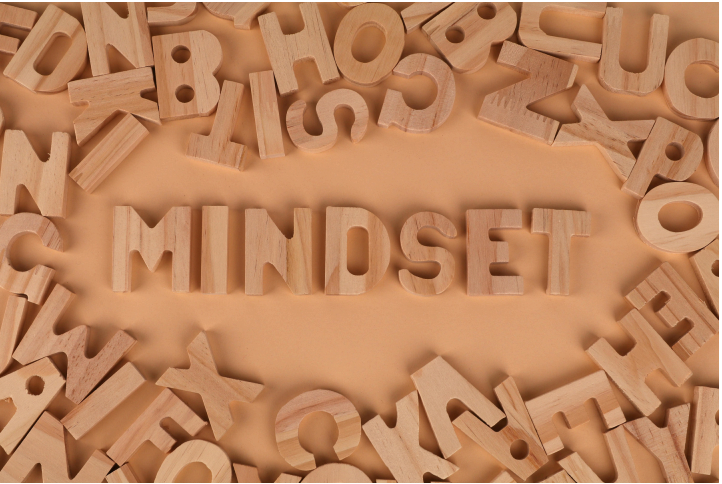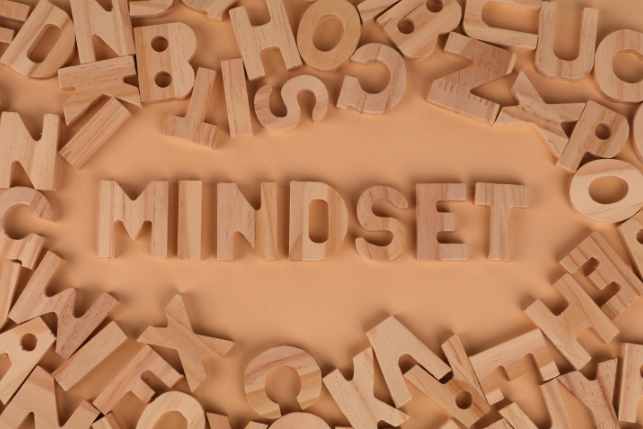
“Whether you think you can or you think you can’t, you’re right.” – Henry Ford
Life can throw us curveballs sometimes. From setbacks in our careers to challenges in our relationships, it’s easy to get discouraged when things don’t go as planned. But with the right mindset and techniques, you can bounce back stronger and achieve your biggest goals.
In this guide, we’ll explore powerful strategies for developing a growth mindset, overcoming limiting beliefs, building resilience, practicing positive thinking and visualization, and cultivating gratitude. With time and consistency, these tools can help you create the life you want.
TL;DR
- Adopt a growth mindset to see setbacks as opportunities to improve.
- Identify and reframe limiting beliefs holding you back.
- Build resilience through self-care, positive relationships, and learning from failures.
- Practice positive thinking, affirmations, and visualization to program success.
- Cultivate gratitude to boost motivation, resilience, and well-being.
- Take small, consistent actions to create lasting change.
Staying Positive During Challenging Times
When you’re faced with obstacles, failures, or setbacks, staying positive can feel difficult. It’s easy to get pulled down by negativity. This short video provides inspiration for maintaining positivity even in dark times: How To Stay Positive During Dark Times
For More Free Videos, Subscribe to the Rhodes Brothers YouTube Channel.
As the video emphasizes, focusing on the positive aspects of your life, expressing gratitude, helping others, and maintaining perspective can help you stay motivated. Progress may feel slow, but persisting in small positive actions compounds over time.
Now back to our tips on cultivating success mindsets…
Shifting to a Growth Mindset
Psychologist Carol Dweck’s research shows that people generally have one of two mindsets – fixed or growth.
With a fixed mindset, you believe abilities are set in stone. With a growth mindset, you see abilities as changeable through effort.
The good news? You can develop a growth mindset with practice. Here are some strategies:

- Change your inner dialogue. Notice negative self-talk and reframe it. “I’m not good at this” becomes “I’m learning and improving.”
- View challenges as opportunities. Rather than seeing obstacles as threats, view them as chances to learn.
- Celebrate progress of all sizes. Recognize each small win to stay motivated.
- Learn from constructive criticism. Feedback helps you identify areas for improvement.
- Find growth-minded mentors. Surround yourself with people who believe in your potential.
- Use apps like Mendi to track your progress and celebrate growth through meditation.
- Join a mastermind group or community like MindsetMagic to get growth-minded perspectives from others.
- Listen to podcasts like The Mindset Mentor to reinforce key mindset principles.
Shifting your mindset is a process, but it unlocks your ability to continue growing, learning, and improving.
Identifying and Reframing Limiting Beliefs
Limiting beliefs hold you back from achieving your dreams. These often subconscious beliefs distort your reality, undermining your confidence.
Start by identifying potential limiting beliefs you have about yourself or your abilities. Common examples include:
- “I’m not smart, talented or experienced enough to succeed in this industry.” This belief may stem from imposter syndrome or comparing yourself to others.
- “I don’t deserve financial success, love or abundance in my relationships.” This scarcity mindset distorts how you see opportunities.
- “I’m too old to change careers or learn new skills.” This fixed mindset assumption ignores the ability to continuously grow and improve.
- “I’ll never be able to start my own business or accomplish this big goal.” This all-or-nothing thinking ignores the power of small, incremental progress.
Take time to write down limiting beliefs you notice coming up repeatedly for you. Doing this helps raise them to your consciousness so you can begin the reframe process.
Once you’ve recognized limiting beliefs, you can start reframing them with more empowering perspectives. For example:
- “I have unique strengths and talents I bring to this field.” Focus on your assets versus what you lack.
- “I am worthy and deserving of abundance in all areas of my life.” Assume you are enough as you are.
- “My age and experience give me valuable perspective.” Leverage your wisdom as an asset.
- “I’m capable of taking small steps each day toward my biggest goals.” Celebrate small wins, not just the end result.
Other techniques that help reframe limiting beliefs include:
- Asking others how they perceive you to get an outside perspective. Their feedback often won’t align with the limiting belief.
- Looking for objective evidence that contradicts the belief. For example, reviewing past accomplishments.
- Imagining how you would counsel a friend who had this belief. We’re often kinder to others than ourselves.
- Repeating empowering mantras daily until your subconscious internalizes them.
With consistent practice, you can move from limiting beliefs to limitless beliefs about your potential. Reframing your self-talk is an ongoing journey, but each small step brings you closer to realizing your full capability.
Building Resilience Through Self-Care
Resilience helps you bounce back from hardship. Self-care is essential for developing resilience. Be sure to:
- Practice mindfulness. Meditation and yoga reduce stress and increase equanimity. Start small – even five minutes a day makes a difference.
- Foster supportive relationships. Turn to others for encouragement and advice when you need it. Build a network of positive people.
- Take breaks. Give your mind time to recharge by taking vacations, digitally detoxing, and reconnecting with hobbies.
- Establish boundaries. Don’t overextend yourself. Learn to say no to unreasonable demands.
- Move your body. Exercise, even a brisk walk, boosts resilience by releasing endorphins.
By caring for your needs, you empower yourself to handle life’s curveballs.
Learning and Growing from Failures
“Failure is success if we learn from it.” – Malcolm Forbes
Setbacks and mistakes are part of life. But failures often provide our greatest opportunities for growth IF we have the right mindset.
Here are tips for harnessing the power of failure:
- View failures as feedback, not condemnation.
- Reframe failures as “learning experiences” versus “mistakes.”
- Identify what went wrong and make a plan for improvement.
- Focus on your efforts, not just results. Progress still has value.
- Keep trying and adjusting – persistence pays off!
- Talk to others who have overcome failures – gain perspective.
With a growth mindset, you recognize failures as stepping stones, not roadblocks, on your path to success.
The Power of Positive Thinking and Visualization
Your thoughts impact your reality more than you might think. By focusing on the positive, you program your mind to expect success versus failure.
Practice positive thinking and affirmations. Consciously replace negative self-talk with empowering statements like “I am confident” or “I am worthy.”
Visualize your ideal future. Envision and feel yourself achieving your goals. Let your mind create the neural pathways that make success feel natural.
Surround yourself with positivity. Curate inspiring images, music, books, and friends who lift you up. Limit time with negative influences.
Gratitude journal. Daily journaling on what you’re grateful for trains your brain to see the positive.
With consistency, you can rewrite mental programs that hold you back from the life you want.
Harnessing Gratitude to Boost Well-Being
Cultivating gratitude has been found in research to increase happiness, strengthen resilience, improve health, and boost motivation.
Here are simple ways to practice more gratitude in your daily life:
- Start a gratitude journal where you write down things you’re grateful for.
- Share appreciation with loved ones often, not just on holidays. Send thank you notes.
- Savor the moment. Notice little joys throughout your day.
- Thank people who have helped you, even in small ways.
- Reflect on how challenges have made you stronger and wiser.
- Volunteer to help those less fortunate. It boosts perspective and gratitude.
- Use visualization to imagine achieving goals – feel immense gratitude.
Gratitude helps you focus on the abundance in your life versus what’s lacking. It unlocks contentment.
Frequently Asked Questions
How do I get started with developing a growth mindset?
Start by noticing when you have fixed mindset thoughts like “I’m not good at this” and consciously reframe them to be more growth oriented like “I can get better at this with practice.” Also take on challenges that feel hard or uncomfortable – this builds your growth mindset muscle!
What’s the best way to overcome limiting beliefs?
Identify potential limiting beliefs through negative self-talk. Ask yourself – is this belief really true? Look for objective evidence that contradicts it. Then intentionally replace it with a more empowering belief. Surround yourself with people who mirror back your strengths and potential.
How can I become more resilient when facing obstacles?
Prioritize daily self-care through mindfulness, exercise, relaxation, and nourishing your mind and body. Foster positive, supportive relationships who lift you up. Reframe setbacks as opportunities to learn and grow. Be patient with yourself – change takes time.
What are some examples of positive affirmations I can use?
Some empowering affirmations include “I believe in myself and my abilities”, “Every day I’m getting stronger and wiser”, “I am worthy of love, joy and abundance”, “My best is yet to come.” Repeat them daily!
How often should I practice visualization for success?
Aim for 5-10 minutes of visualization 1-3 times per day. Visualize yourself achieving your goals in vivid detail – imagine how it looks, feels, smells, sounds. The more senses you engage, the more powerful it becomes.
What are some simple gratitude practices I can add to my routine?
Try starting and ending your day by listing 3 things you’re grateful for. Share appreciation with loved ones often. Send thank you notes. Savor little joys throughout your day. Volunteer to help others in need.
How can I stay motivated pursuing big goals?
Break big goals down into smaller milestones. Track progress and celebrate each win. Enlist friends to keep you accountable. Join a community of like-minded people. Focus on how achieving your goals will feel versus viewing the process as a chore.
What if I slip back into old habits and limiting beliefs?
Remember change isn’t linear. Refocus on progress made rather than perfection. Analyze what led to the slip up and make adjustments. Be gentle with yourself – talk to yourself as you would a friend. Each day is a new opportunity to practice your new mindsets.
How can I make these new habits stick long-term?
Consistency over time is key. Schedule time daily to focus on your new mindset habits even when motivation dips. Track your progress. Join a community or enlist an accountability partner. Celebrate when you reach milestones to stay motivated.
How will adopting a growth mindset improve my life?
A growth mindset empowers you to see challenges as opportunities to learn, persist through obstacles, take risks, and continue developing new skills over time. This enables you to reach your full potential versus being limited by a fixed mindset that assumes abilities can’t change.
Taking Small, Consistent Actions
Lasting change doesn’t happen overnight. It requires small, consistent actions day after day. Here are some final tips:
- Set smart goals. Make them specific, measurable and time-bound. This creates accountability.
- Start small. Big goals can feel overwhelming. Break them down into bite-sized steps.
- Track progress. Use a journal, app or spreadsheet to monitor consistency.
- Reward milestones. Celebrate wins along the way to stay motivated.
- Enlist support. Share your goals and journey with positive friends or mentors.
- Be patient. Change is a process. Stick with it through ups and downs.
By taking it step-by-step, you build the mindset, habits and skills needed to create lasting transformation.
The path to success starts from within. Developing a growth mindset, building resilience, practicing gratitude and positive thinking – these skills empower you to reach your greatest potential. Remember, progress over perfection! Small, consistent steps will get you where you want to go.
Wishing you all the best on your journey! Thank you for reading! I hope you found this post on developing a growth mindset and success mindsets helpful. Don’t forget to subscribe to our Rhodes Brothers YouTube channel for more great content to help you achieve your biggest goals!
Resource List
- Mindset by Carol Dweck
- The Power of Positive Thinking by Norman Vincent Peale
- The Gratitude Diaries by Janice Kaplan
- The Resilience Breakthrough by Christian Moore
- The Happiness Advantage by Shawn Achor
- Thecompoundeffect.com
- The Desire Map by Danielle LaPorte
- Attitude of Gratitude
Developing a Growth Mindset Cheat Sheet
- Believe you can improve with effort
- Embrace challenges as learning experiences
- Celebrate progress of all sizes
- Learn from constructive feedback
- Surround yourself with growth-minded mentors
- Replace negative self-talk with empowering beliefs
- View setbacks as opportunities to grow
- Focus on progress, not perfection
- Cultivate resilience through self-care
- Harness failures as stepping stones to success
- Practice positive thinking, visualization, and gratitude
- Take small, consistent actions to create lasting change




